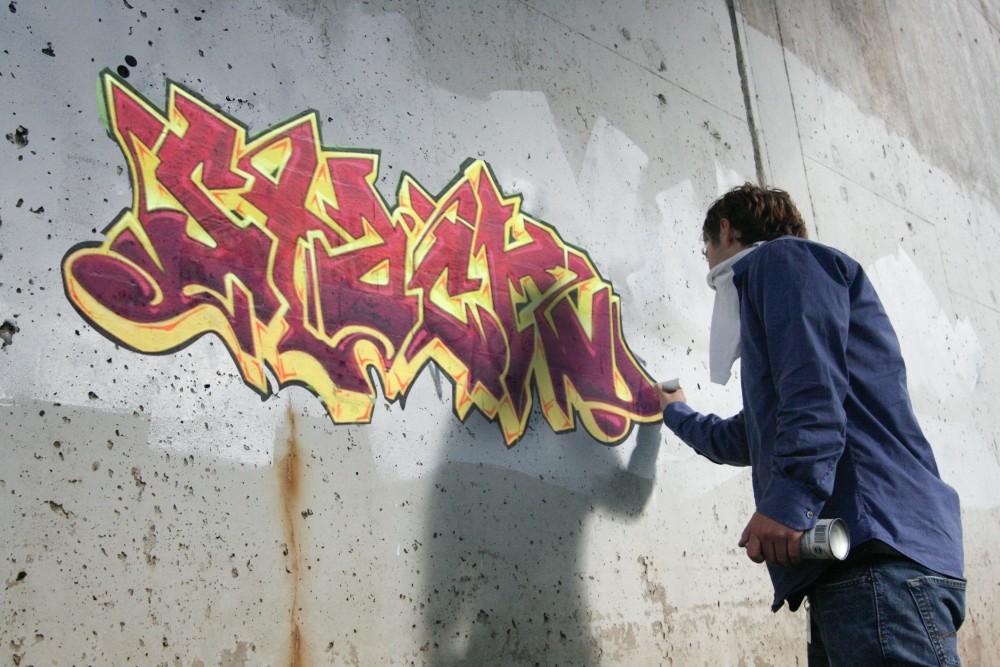GVPD: Graffiti acts increase tuition

GVL / Andrea Baker There has been an increased number of vabdalism on campus
Oct 3, 2011
Some may think of graffiti as a means of artistic expression, but few institutions condone such acts.
The Grand Valley State University Police Department is working to remove graffiti around the university, but those efforts translate to costs. Recently, the university came across permanent personal statements on its property that the school must pay to remove.
Capt. Brandon DeHaan, assistant director of the GVPD, reported that police are currently investigating four accounts of graffiti that he believes have been committed by the same person or group.
Because of this, the university must pay to repaint one wall near Lubber’s Stadium and sandblast three sidewalk areas to replace the vandalized sections.
The damage, costing $200 each and $800 total, will be incorporated into student tuition next year if the culprit is not found and held accountable.
“The sidewalks, buildings and infrastructure are inappropriate canvases for artistic and political views,” DeHaan said.
Although graffiti is seen as an art form by some, defacing public property violates federal law.
“The First Amendment does not protect the creation of graffiti on public or private property,” said Mark Richards, an associate professor in GVSU’s political science department.
Richards said the definition of property includes natural objects such as trees and plants, but most of the graffiti found on campus is on buildings and other structures.
DeHaan said the university does not necessarily have a problem with the statements that students made with the paint, but it does not condone the destructive method the culprits used to get their point across. He said he discourages students from doing graffiti because it “detracts from the beauty of the university” and takes money from student tuition to repair the damage.
“What we’re trying to do is decrease damage to the university and keep tuition low,” he said.
DeHaan said the crime would appear on the offender’s criminal record as a high court misdemeanor, and that person would be required to make a court appearance.
This case of graffiti is not the first that GVSU has seen. DeHaan said the university had a problem with graffiti in the public bathrooms last year.
“In the past, students have used spray paint, ink pens and carving,” he said while adding that no specific technique is particularly worse than any other. “Damage is damage. If there is a cost to repair, it’s considered damage.”
Because the methods are of equal severity, the consequences for any type of graffiti are the same for students who are caught.
Although students are prohibited from creating permanent art with paints and pens, the university does permit the use of water-soluble chalks. The GVSU chalking policy allows registered student organizations to chalk messages on certain sidewalks to advertise upcoming events.






















